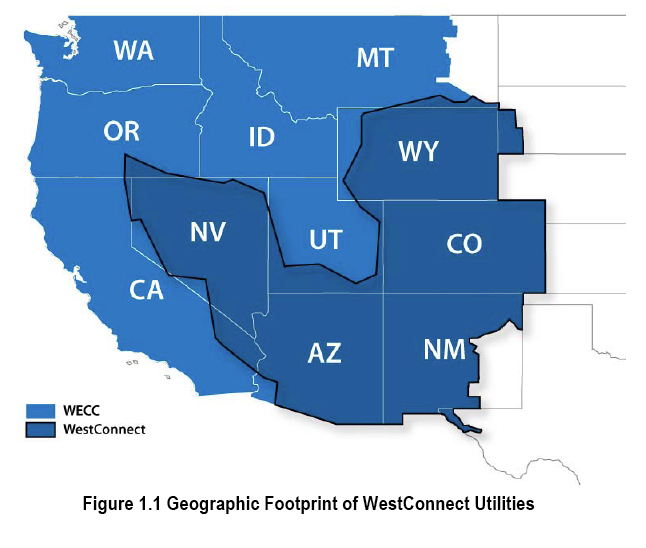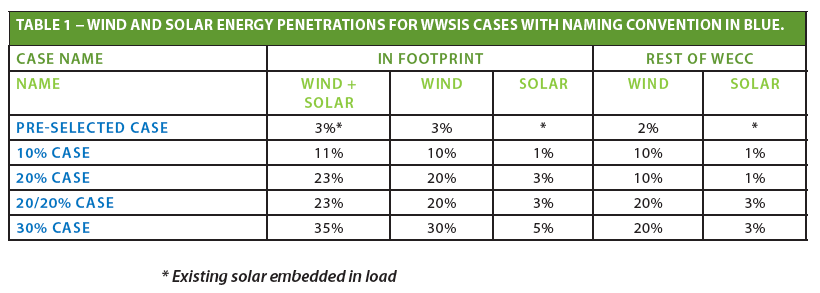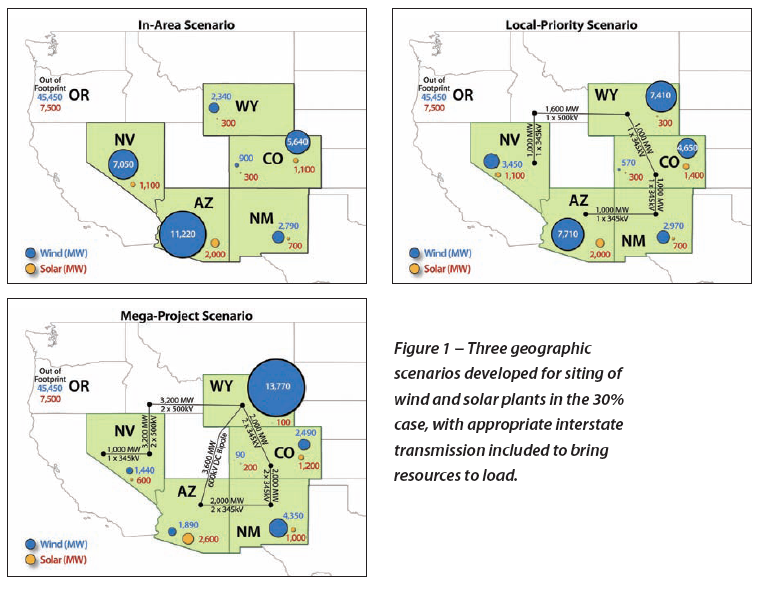NATIONAL RENEWABLE ENERGY LABORATORY OF THE US DEPARTMENT OF ENERGY
INTRODUCTION
WESTCONNECT
WestConnect is a group of transmission providers that are working collaboratively on initiatives to improve wholesale electricity markets in the West. Participants include Arizona Public Service, El Paso Electric Co., NV Energy, Public Service of New Mexico, Salt River Project, Tri-State Generation and Transmission Cooperative, Tucson Electric Power, Western Area Power Administration, and Xcel Energy.
The focus of the Western Wind and Solar Integration Study (WWSIS) is to investigate the operational impact of up to 35% energy penetration of wind, photovoltaics (PVs), and concentrating solar power (CSP) on the power system operated by the WestConnect group of utilities in Arizona, Colorado, Nevada, New Mexico, and Wyoming. WWSIS was conducted over two and a half years by a team of researchers in wind power, solar power, and utility operations, with oversight from technical experts in these fields. This report discusses the development of data inputs, the design of scenarios to address key issues, and the analysis and sensitivity studies that were conducted to answer questions about the integration of wind and solar power on the grid.
KEY FINDINGS
The technical analysis performed in this study shows that it is operationally feasible for WestConnect to accommodate 30% wind and 5% solar energy penetration, assuming the following changes to current practice are made over time:
- Substantially increase balancing area cooperation or consolidation, either real or virtual
- Increase the use of sub‐hourly scheduling for generation and interchanges
- Increase utilization of existing transmission
- Enable coordinated commitment and economic dispatch of generation over wider regions
- Incorporate state of the art (S‐o‐A) wind and solar forecasts in unit commitment and grid operations
- Increase the flexibility of dispatchable generation where appropriate (e.g., reduce minimum generation levels, increase ramp rates, reduce start/stop costs or minimum down time)
- Commit additional operating reserves as appropriate
- Build transmission as appropriate to accommodate renewable energy expansion
- Target new or existing demand response or load participation programs to accommodate increased variability and uncertainty
- Require wind plants to provide down reserves
Download executive summary (PDF): Western Wind and Solar Integration Study
Download full version (PDF): Western Wind and Solar Integration Study
Tags: Arizona, AZ, CO, colorado, Department of Energy, National Renewable Energy Laboratory, Nevada, New Mexico, NM, NREL, NV, Solar Energy, Westconnect, Wind Energy, WY, Wyoming









 RSS Feed
RSS Feed